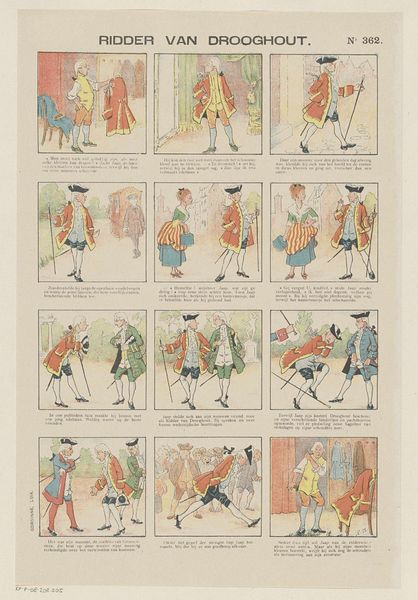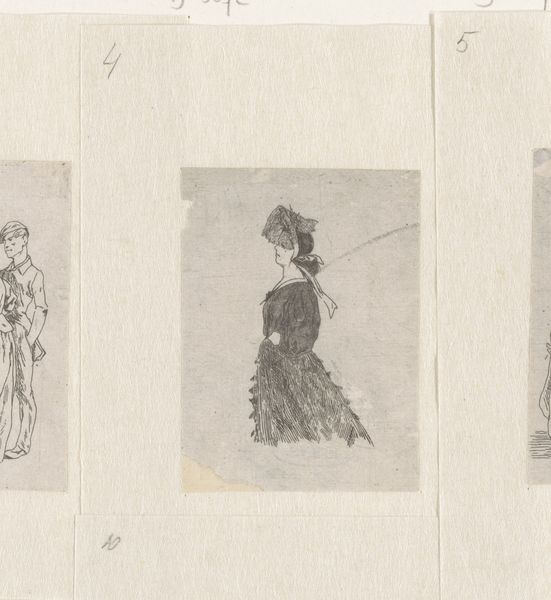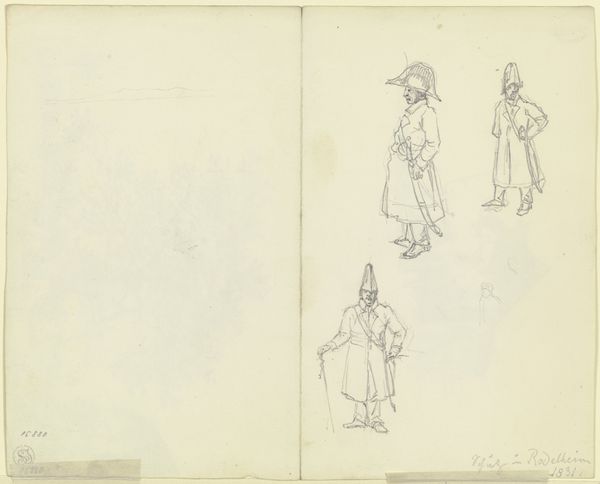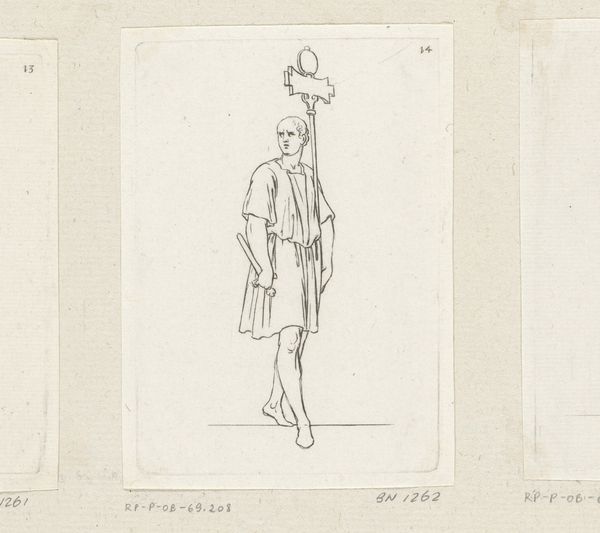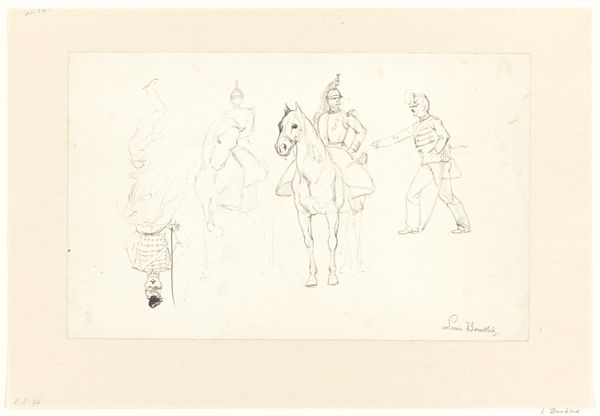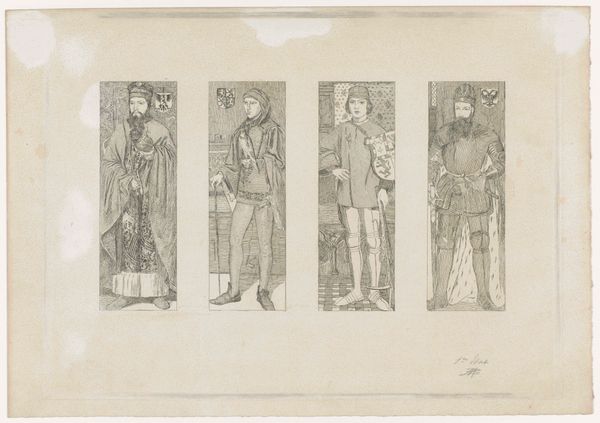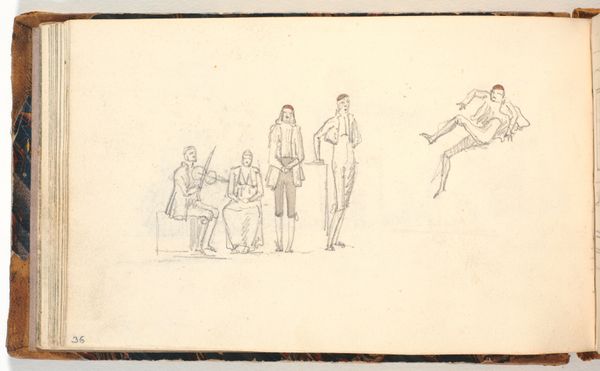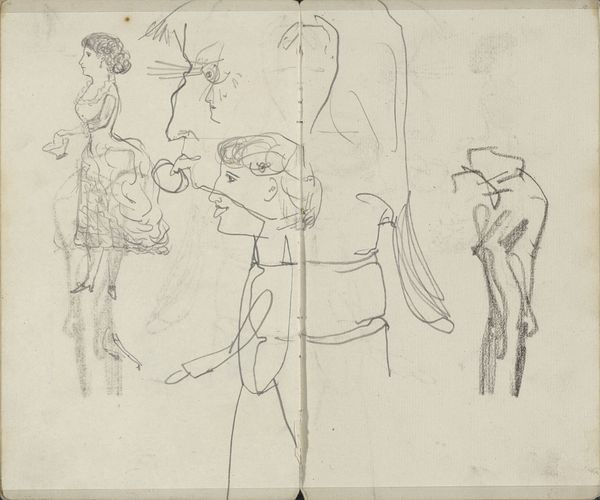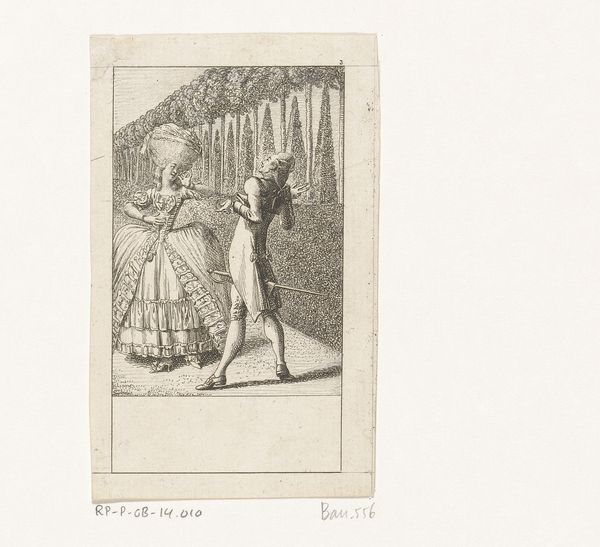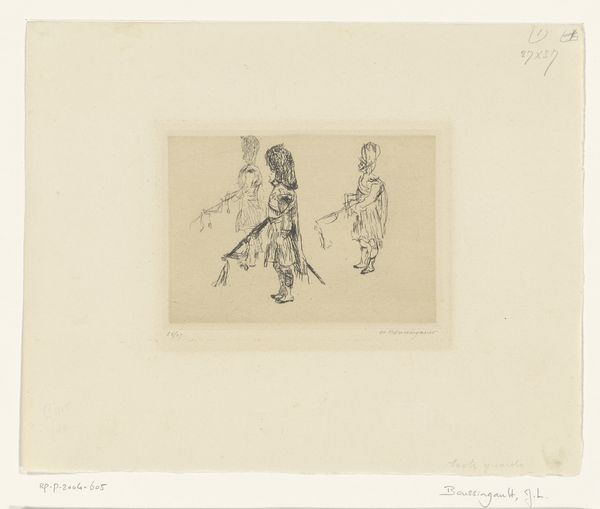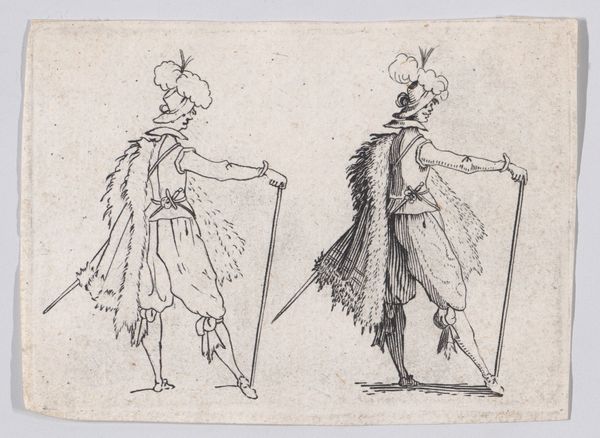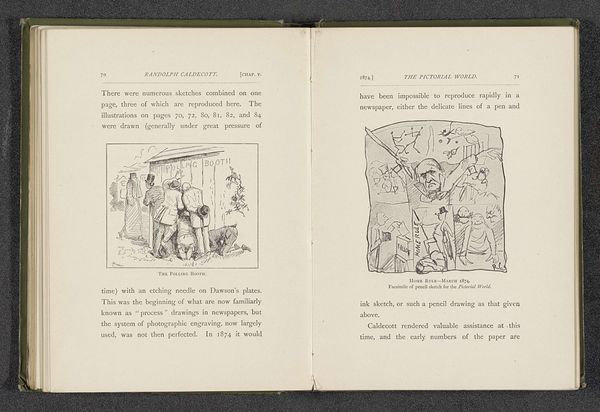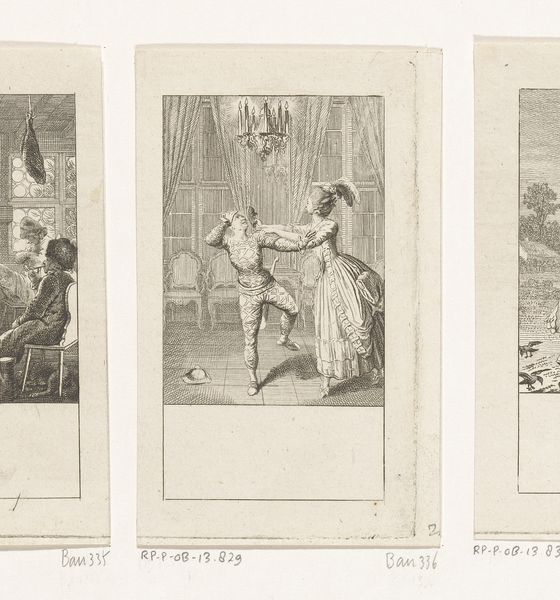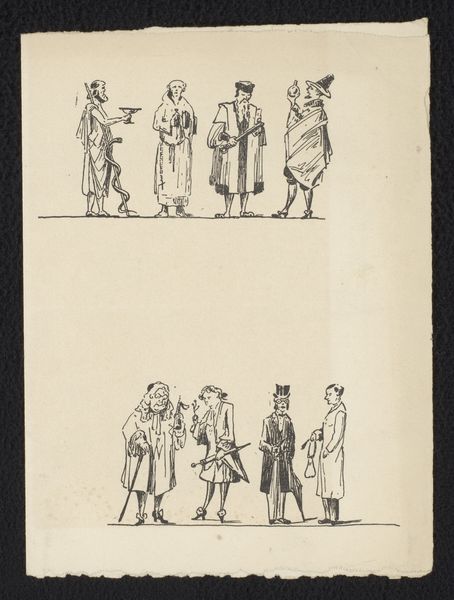
drawing, graphic-art, print, ink, poster
#
drawing
#
graphic-art
#
art-nouveau
# print
#
ink
#
watercolour illustration
#
poster
Dimensions: height 245 mm, width 381 mm
Copyright: Rijks Museum: Open Domain
Editor: This is a print called *Ceintures en ruban* or "Ribbon Belts", an illustration from the *Gazette du Bon Ton* in 1914 by Jan van Brock. It's a set of images showing how belts might accent the fashions of the time, rendered in ink and watercolour. There's something carefree and almost playful about the way these are presented, especially with the accompanying text, even if I can’t read it. How do you interpret this work? Curator: Indeed, its playful spirit contrasts starkly with the historical backdrop. Europe was on the brink of World War I in 1914. This image, promoting ribbon belts and fashionable attire, offers a glimpse into the visual language of that time. Don't you think there is almost an escapist fantasy element woven within its very fabric? Editor: I can see that. In the Art Nouveau style, even the practicality of dress feels… decorative. Curator: Exactly. Consider the broader symbolism here. Ribbon, in many cultures, signifies connection, binding, and celebration, while belts traditionally represent structure and control. Notice how these belts are displayed in this print – not as constraints, but rather, adorning women, emphasizing silhouette. Editor: They're transforming a functional item into an artistic accent… and maybe a symbol of feminine autonomy? Curator: Possibly. They allowed a degree of self-expression during a restrictive era. What cultural or psychological layers do you think are relevant here? What memory might this recall? Editor: I hadn't considered that… But it does bring up ideas of social expectations versus personal freedoms. A seemingly simple fashion print actually reflects complex issues. I guess I saw the print as a pretty picture from the past, but now I appreciate how its lightness could conceal so many subtle visual metaphors. Curator: Precisely. Every image whispers cultural history if you take the time to listen closely. I now think, however, that it makes me long for that kind of aesthetic playfulness... A longing to feel connected to others once again.
Comments
No comments
Be the first to comment and join the conversation on the ultimate creative platform.
